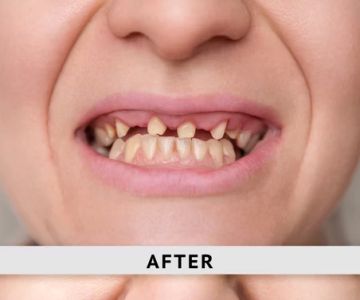Comprehensive Guide to Tooth Restoration Methods and Techniques for a Healthier Smile
Tooth restoration is a crucial aspect of modern dentistry, helping individuals restore the function and appearance of their teeth after injury, decay, or wear. Whether you're dealing with cavities, broken teeth, or missing teeth, there are a variety of methods and techniques available to repair and restore your smile. In this guide, we’ll explore the most common tooth restoration methods and techniques, discuss their benefits, and provide tips for selecting the right treatment for your needs.
- Types of Tooth Restoration Methods
- Dental Crowns and Veneers
- Dental Implants: A Long-Term Solution
- Tooth Fillings: The Standard Repair Method
- Restorative Dentistry for a Complete Smile
- How to Choose the Right Tooth Restoration Technique
Types of Tooth Restoration Methods
Tooth restoration methods can be categorized based on the severity of the dental issue. For minor damage, such as cavities, fillings are often sufficient. However, for more extensive damage, such as a cracked or missing tooth, restorative options like crowns, bridges, or dental implants may be necessary. Let's dive deeper into the most common methods:
Dental Crowns and Veneers
Dental Crowns: A dental crown is a cap placed over a damaged tooth to restore its shape, size, and strength. Crowns are made from materials such as porcelain, metal, or a combination of both, and they are often used for teeth that are severely decayed or fractured. Crowns provide not only protection but also a natural appearance, especially when made from tooth-colored materials.
Veneers: Dental veneers are thin shells of porcelain or composite resin that are bonded to the front of the teeth. Veneers are typically used for cosmetic purposes, such as covering discolored, chipped, or misaligned teeth. Unlike crowns, which cover the entire tooth, veneers only cover the front surface, making them ideal for restoring the aesthetics of your smile without significant tooth reduction.
Dental Implants: A Long-Term Solution
When a tooth is missing, dental implants provide a permanent solution. Implants involve placing a titanium post into the jawbone to act as a root for a new artificial tooth. Once the implant integrates with the bone (a process called osseointegration), a crown or bridge is placed on top. Dental implants are known for their durability and natural appearance, making them one of the most effective tooth restoration methods for replacing missing teeth.
Tooth Fillings: The Standard Repair Method
Tooth fillings are the most common form of tooth restoration for cavities. When a tooth has decay, a dentist will remove the decayed portion and fill the space with a material such as amalgam, composite resin, or gold. Fillings help restore the tooth's structure and function while preventing further decay. Composite fillings, which match the natural color of the tooth, are often used for cavities in visible areas.
Restorative Dentistry for a Complete Smile
Restorative dentistry encompasses a broad range of techniques designed to restore both the function and appearance of the teeth. This can include treatments for cavities, broken or missing teeth, gum disease, and more. Restorative treatments may involve a combination of techniques, such as fillings, crowns, bridges, and implants, depending on the patient's needs. The goal of restorative dentistry is not only to fix dental issues but also to enhance the overall health of the mouth, providing long-lasting solutions for a healthy, beautiful smile.
How to Choose the Right Tooth Restoration Technique
Choosing the right tooth restoration technique depends on several factors, including:
- The Extent of Damage: For minor cavities, fillings might be sufficient. For more severe damage, crowns or implants may be needed.
- Cost: Dental implants, while effective, are often more expensive than fillings or crowns. Your budget will play a role in your decision.
- Longevity: Dental implants offer a permanent solution, whereas fillings may need to be replaced over time.
- Aesthetics: If the restoration is for a visible tooth, you might want to opt for materials that mimic the natural appearance of your teeth, such as porcelain or composite resins.
- Your Dentist's Recommendation: Your dentist will assess your dental health and provide expert recommendations based on your specific needs.
Each of these factors will guide you in choosing the most appropriate restoration method for your situation. It's always best to consult with a dental professional to discuss your options and determine the most suitable solution for you.
If you're seeking more information about tooth restoration methods, visit Dentistry Toothtruth, where you can explore detailed guides on restorative dentistry and find the best solutions for your dental health needs. Our expert advice can help you make informed decisions about your smile restoration.







 Westgate Dental Arts
Westgate Dental Arts Coventry Family Dental
Coventry Family Dental Familia Dental
Familia Dental Dr. Daniel S. Fife, DDS
Dr. Daniel S. Fife, DDS Dentistry At Suburban Square: Michael I. Wollock, DMD
Dentistry At Suburban Square: Michael I. Wollock, DMD Comfort Care Dental
Comfort Care Dental The Importance of Oral Health Education During Pregnancy for a Healthy Pregnancy
The Importance of Oral Health Education During Pregnancy for a Healthy Pregnancy Why Skipping Dental Checkups Can Lead to Bigger Oral Health Problems
Why Skipping Dental Checkups Can Lead to Bigger Oral Health Problems Advantages of Porcelain Dental Restorations
Advantages of Porcelain Dental Restorations Best Tips for Brushing Your Teeth Properly for Healthy Gums: Essential Techniques for Oral Health
Best Tips for Brushing Your Teeth Properly for Healthy Gums: Essential Techniques for Oral Health How Can Diabetes Cause Tooth and Gum Problems? Preventing and Managing Oral Health Issues
How Can Diabetes Cause Tooth and Gum Problems? Preventing and Managing Oral Health Issues Healthy Habits for Promoting Good Oral Health and Hygiene: Tips for a Healthy Smile
Healthy Habits for Promoting Good Oral Health and Hygiene: Tips for a Healthy Smile